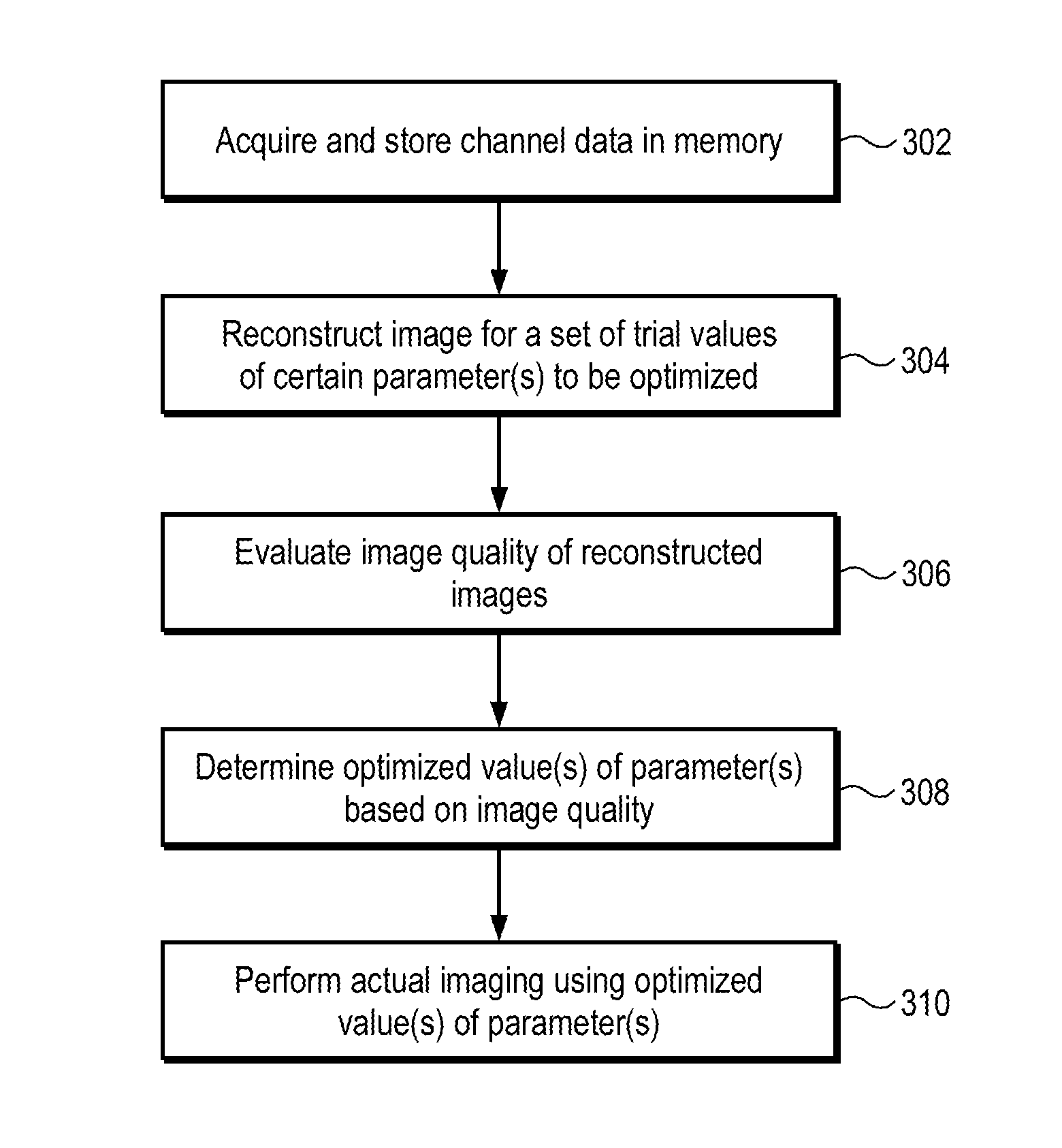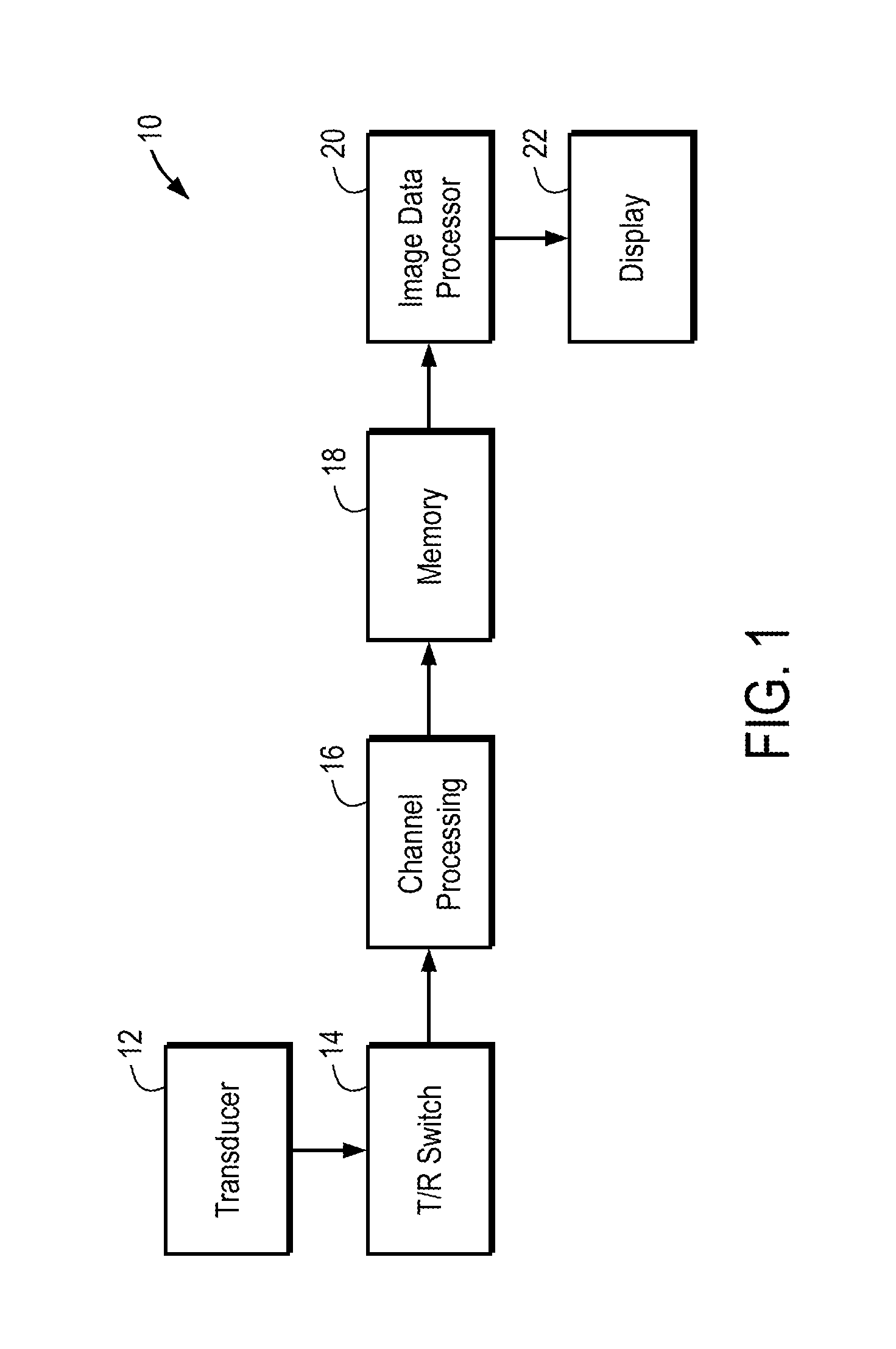Aberration correction using channel data in ultrasound imaging system
a technology of ultrasound imaging system and channel data, applied in the field of ultrasound imaging system, can solve the problems of limited space available on the console for imaging control keys, difficult to use, and difficult to design the user-control system
- Summary
- Abstract
- Description
- Claims
- Application Information
AI Technical Summary
Benefits of technology
Problems solved by technology
Method used
Image
Examples
Embodiment Construction
[0027]FIG. 1 is a block diagram of the system architecture of an ultrasound scanner 10. In a specific embodiment, the scanner 10 employs a zone-based technique for real-time B-mode imaging, and utilizes a transmit beam from which many receive beams are formed, such that a full field of view image can be formed using much fewer firings than a conventional system, i.e., 30-50 firings. The main signal path begins with a transducer 12 with switch 14. The transducer 12 includes an array of transducer elements. For each transmit beam firing, the receive RF echo data is digitized and preprocessed within the channel processing block 16 where demodulation, averaging, and filtering occurs. Next, the baseband channel in-phase / quadrature (I / Q) data is stored in a large memory 18. An image data processor 20 (e.g., one or more DSPs or Digital Signal Processors) pulls the channel I / Q data from the memory 18, and performs dynamic receive beam formation, detection, log compression, filtering, and sc...
PUM
| Property | Measurement | Unit |
|---|---|---|
| sound speed | aaaaa | aaaaa |
| sound speed | aaaaa | aaaaa |
| speed | aaaaa | aaaaa |
Abstract
Description
Claims
Application Information
 Login to View More
Login to View More - R&D
- Intellectual Property
- Life Sciences
- Materials
- Tech Scout
- Unparalleled Data Quality
- Higher Quality Content
- 60% Fewer Hallucinations
Browse by: Latest US Patents, China's latest patents, Technical Efficacy Thesaurus, Application Domain, Technology Topic, Popular Technical Reports.
© 2025 PatSnap. All rights reserved.Legal|Privacy policy|Modern Slavery Act Transparency Statement|Sitemap|About US| Contact US: help@patsnap.com



